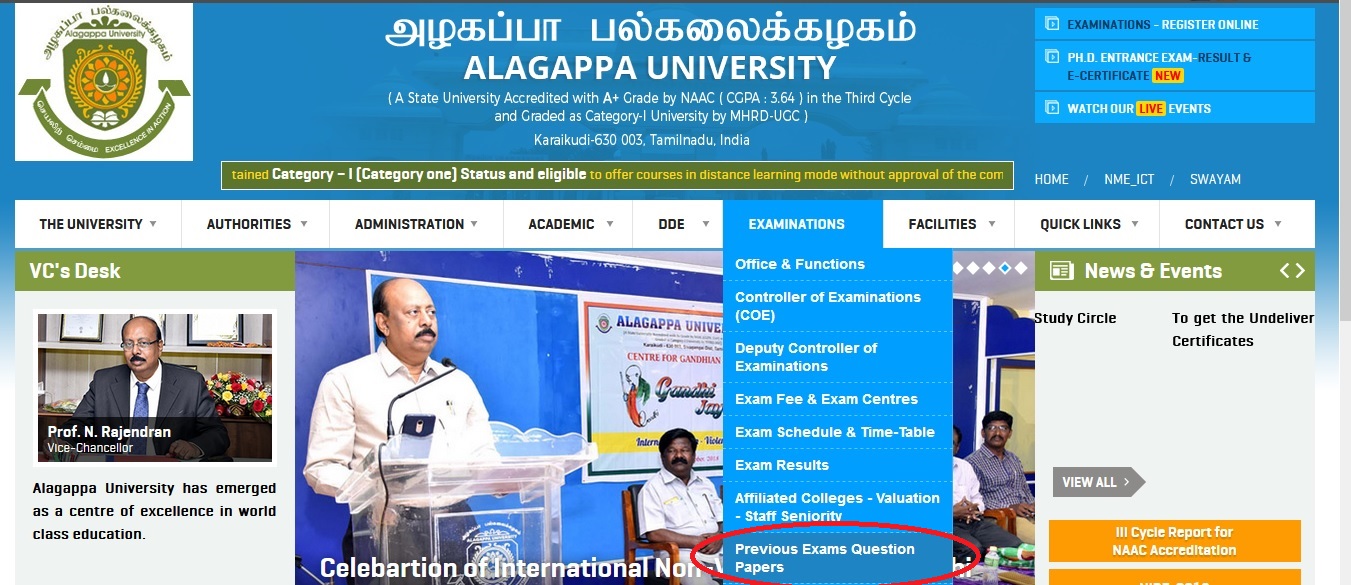Biomedical Instrumentation M.SC Model Question Papers : alagappauniversity.ac.in
Name of the University : Alagappa University
Degree : M.SC
Department : Physics
Subject Code/Name : Biomedical Instrumentation
Year : II
Semester : IV
Document Type : Model Question Papers
Website : alagappauniversity.ac.in
Download Model/Sample Question Paper : APRIL 2010 : https://www.pdfquestion.in/uploads/alagappauniversity.ac.in/3899.-MSC_PHYSICS.pdf
BIOMEDICAL INSTRUMENTATION QUESTION PAPER
Part – A
1. Draw the structure of the neuron.
2. Define half cell potential.
3. Define differential amplifier.
Related : Alagappa University Principles Of Education Management M.B.A Model Question Papers : www.pdfquestion.in/4272.html
4. What is EOG –
5. What is cardiac output –
6. Mention any three advantages of blood pressure measurement by
7. What are the different magnets that can be used in NMR imaging system –
8. Define specific acoustic impendance.
9. What is Diathermy-
10. What do you mean by defibrillators –

11 (a) Describe the anatomy of human heart.
12. (a) Explain the principle and origin of heart sounds that
13. (a) Explain the principle of Electromagnetic Flow meter.
14. (a) Write the advantages of NMR imaging system.
15. (a) Explain with basic block diagram the working of
16. Explain different electrodes used in ECG.
17. Explain the description of an Electroencephalograph with block
18. Explain the principle and working of laser doppler blood flow meter.
19. Explain the principle and working of NMR imaging system.
20. With neat block diagram explain the working of a typical
Part – B
1. State D’Alemberts principle.
2. Give two advantages of Lagrangian approach over the Newtonian approach.
3. Define differential scattering cross-section.
4. State Kepler’s third law of planetary motion.
5. Define Euler Angles.
6. What is meant by Normal Coordinate –
7. State the principle of Least Action.
8. What do you mean by Canonical Transformation –
9. State the two basic postulates of special theory of relativity.
10. What are the conditions for the Lorentz transformation –
11 a. Develop the notation for velocity in terms of Generalised Coordinates.
12 a. Reduce the two body problem to its equivalent one body problem.
13 a. Derive the kinetic energy of a rigid body in space.
14 a. Show that the Poisson brackets are invariable under canonical
15 a. Discuss the law of addition of velocities in relativity.
16. Deduce Lagrange’s equation of motion from D’-Alembert’s principle
17. Obtain an expression for Rutherford scattering cross-section.
18. What are normal coordinates – Discuss the normal frequencies of a
19. Discuss Kepler’s problem by action angle variable method.
20. a)Derive Einsterin’s mass-energy relation.
Part – C
1. What is meant by dark current-
2. Give the applications of tunnel diode.
3. Define depletion mode MOSFET.
4. What is DIAC-
5. Draw the circuit diagram of voltage follower.
6. Define filter. How are filters classified-
7. What is the difference between the saw tooth wave and the triangular –
8. Define resolution in A/D converter.
9. What do you mean by monolithic IC-
10. List the applications of CCDs.
11. a. Write a short note on Schottky diode.
12. a. Draw the V-I characteristics of SCR and explain the same.
13. a. Describe the band-pass filter.
14. a. Explain the principle and working of dual slope ADC.
(OR)
b. Explain the action of R-2R ladder in D/A conversion.
15. a. Explain masking and etching.
(OR)
b. Describe the working of the 555 timer as a monostable multivibrator.
Answer any THREE Questions
16. Describe with a neat circuit, the effect of forward and reverse biasing in a PN junction.
17. Obtain the V-I characteristics of N-Channel JFET and explain its working.
18. Using Op-Amp, solve the following simultaneous equations 3a ? 2b ? 8; 2a ? 2b ? 6.
19. Give a detailed account on the working of triangular wave generator and obtain an expression for the frequency of oscillation.
20. Describe the various steps involved in fabricating diodes, transistors and capacitors.